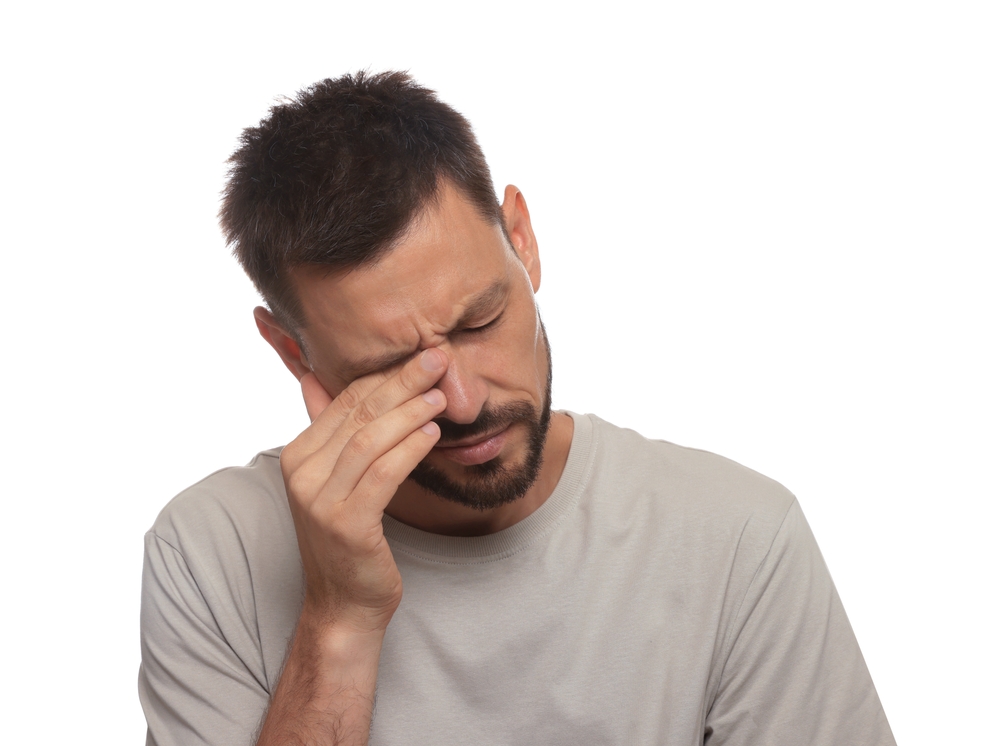
Dry eye occurs when your eyes fail to produce sufficient tears or when the tears evaporate too rapidly. This imbalance disrupts the tear film's stability, leading to discomfort, irritation, and potential vision problems. Tears play a crucial role in maintaining the health and clarity of your eyes, making dry eye a condition that demands attention.
Causes of Dry Eye
Several factors can contribute to the development of dry eye, including:
- Environmental Factors: Exposure to dry air, wind, smoke, or prolonged screen time can increase tear evaporation and exacerbate dry eye symptoms.
- Medical Conditions: Certain autoimmune disorders, such as Sjögren's syndrome, rheumatoid arthritis, and lupus, can affect tear production and quality.
- Medications: Some prescription and over-the-counter drugs, including antihistamines, decongestants, and antidepressants, can reduce tear production as a side effect.
- Age: As you grow older, your tear production can decrease due to hormonal changes or natural aging processes.
- Meibomian Gland Dysfunction: The meibomian glands, located in your eyelids, produce the oily layer of the tear film. When these glands become blocked or dysfunctional, they can disrupt the tear film's stability, leading to dry eye.
- Eyelid Problems: Conditions like ectropion (outward-turning eyelids) or entropion (inward-turning eyelids) can affect tear distribution and cause dry eye symptoms.
- Refractive Surgery: Procedures like LASIK or PRK can temporarily disrupt tear production and increase the risk of dry eye in some individuals.
Common Symptoms of Dry Eye
Dry eye can manifest in various ways, and the symptoms can range from mild to severe. Some of the most common symptoms include:
- Stinging or Burning Sensation: One of the most prevalent symptoms, this discomfort can be particularly noticeable after prolonged reading, computer use, or exposure to dry environments.
- Eye Redness: Dry eye can cause inflammation and redness in the eyes, often accompanied by a gritty or sandy sensation.
- Blurred Vision: When the tear film is disrupted, it can affect the clarity of your vision, leading to blurred or fluctuating vision.
- Sensitivity to Light: Dry eyes can become more sensitive to bright lights or glare, causing discomfort and squinting.
- Eye Fatigue: Prolonged eye strain and discomfort can lead to feelings of tiredness or fatigue, especially after extended periods of reading or screen time.
- Excess Tearing: In an attempt to compensate for the lack of lubrication, your eyes may produce excessive tears, which can paradoxically exacerbate the dryness.
It's important to note that the severity and combination of symptoms can vary from person to person, and some individuals may experience only mild discomfort.
Risks of Untreated Dry Eye: Long-Term Effects on Vision
While dry eye may seem like a minor inconvenience, ignoring the symptoms can have serious consequences for your vision and eye health. The cornea, the clear front part of your eye, relies on a stable tear film for nourishment and protection. Chronic dry eye can lead to corneal erosion, scarring, or even ulceration, potentially compromising your vision.
A disrupted tear film can make your eyes more susceptible to bacterial, viral, or fungal infections, which can further exacerbate eye discomfort and potentially lead to vision loss if left untreated.
Dry eye can worsen the symptoms of other eye conditions, such as blepharitis (eyelid inflammation), allergic conjunctivitis, or even glaucoma, making it more challenging to manage these conditions effectively.
In severe cases, untreated dry eye can lead to scarring or thinning of the cornea, potentially causing permanent vision loss or blindness if left unaddressed. By recognizing and addressing dry eye symptoms promptly, you can prevent these potential complications and maintain optimal eye health and vision.
When to See a Specialist
If you experience persistent or worsening dry eye symptoms, it's essential to seek professional medical attention. Your eye doctor can perform a comprehensive eye examination to diagnose dry eye and determine the underlying cause. The diagnostic process may include:
- Patient History: Your eye care professional will ask about your symptoms, medical history, medications, and environmental factors that may contribute to dry eye.
- Visual Acuity Testing: This test evaluates your vision clarity and can help identify any vision problems related to dry eye.
- Slit-Lamp Examination: Using a specialized microscope, your eye care professional can examine the structures of your eyes, including the tear film, cornea, and eyelids, for signs of dryness or inflammation.
- Tear Film Evaluation: Various tests, such as the Schirmer test, tear breakup time (TBUT), or ocular surface staining, can assess the quantity and quality of your tear film.
- Meibomian Gland Evaluation: If meibomian gland dysfunction is suspected, your eye care professional may perform additional tests to evaluate the function and structure of these glands.
Based on the findings, your eye care professional can recommend appropriate treatment options tailored to your specific condition and needs.
Schedule Your Dry Eye Evaluation with Orange County Eye Institute Today
Dry eye is more than just a minor inconvenience; it's a chronic condition that can significantly impact your vision and overall eye health if left untreated. Ignoring dry eye symptoms can lead to long-term complications, such as corneal damage, increased risk of eye infections, and even permanent vision loss in severe cases.
If you're experiencing dry eye symptoms, schedule an appointment with our experienced eye care specialists today. Our team will provide a comprehensive evaluation and recommend personalized treatment options to help alleviate your discomfort and protect your vision. Visit Orange County Eye Institute at our office in Santa Ana, California, or call (949) 770-1322 to book an appointment today.










